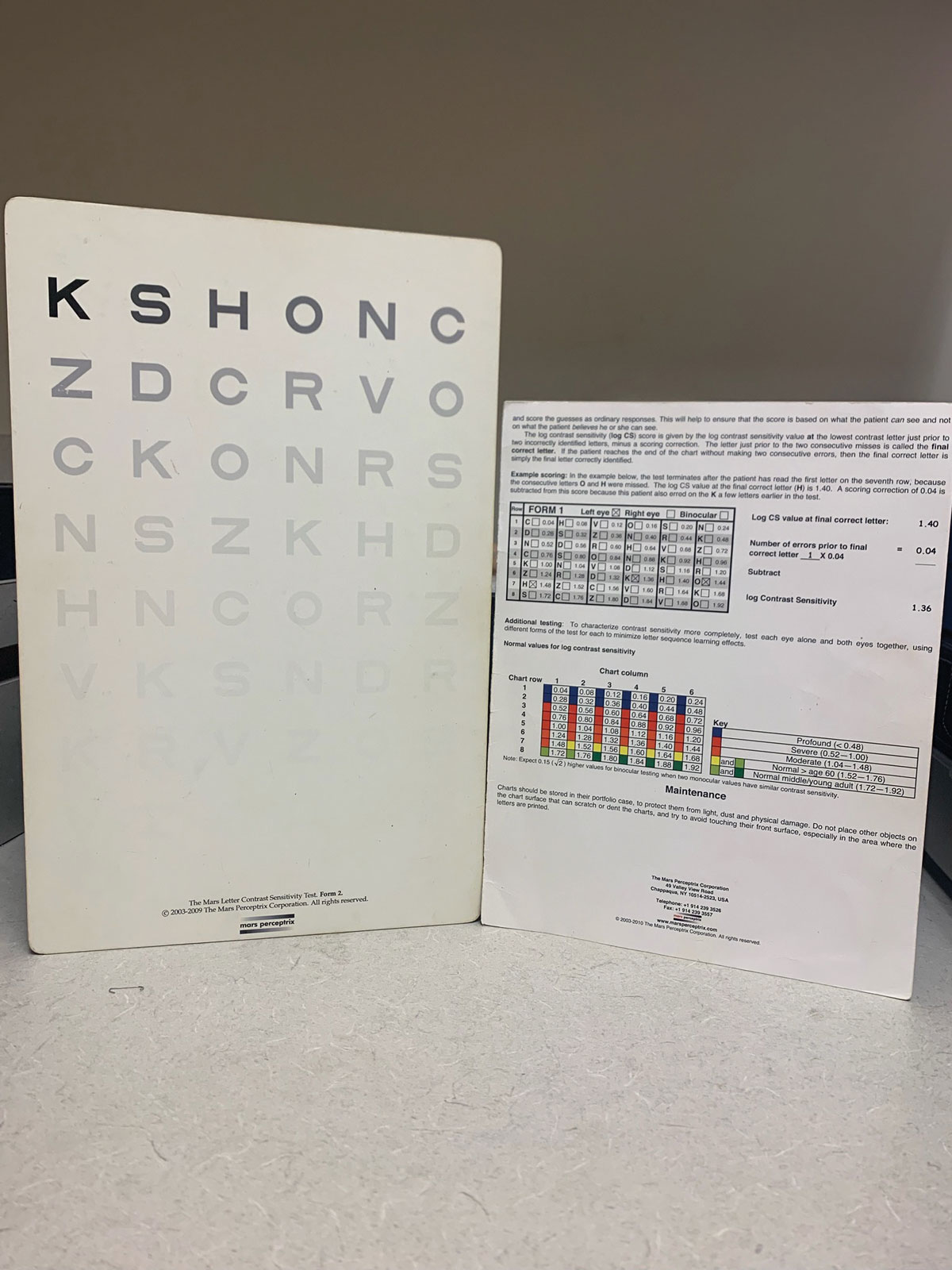 |
| Blue/violet filtering CLs may be beneficial for those with low, but not high, contrast sensitivity. Photo: Bisant A. Labib, OD. Click image to enlarge. |
Researchers in Milan recently compared photopic contrast sensitivity (CS) of healthy subjects in an indoor environment with either blue/violet-filtering or clear contact lenses, investigating a possible dependence of the CS variation on an individual’s intrinsic CS when wearing the clear lenses. They discovered that the filtering lenses improved CS for participants who have a relatively low contrast acuity and then worsened it for participants who have a relatively high capacity otherwise.
Optical transmittance of both modalities was measured by a spectrophotometer. Photopic CS was measured monocularly on 41 participants (roughly half aged 20 to 36 and the remainder aged 44 to 66) by a digital optotype system at spatial frequencies from 1.5cpd to 18cpd, wearing either clear or blue light–filtering contact lenses. All lenses were made with the same material (Falcon IV).
The study noted that transmittance curves in the visible range of the two lenses were very similar, despite an absorption band in the filtered lens’s spectrum with the minimum of transmittance at 428nm, equal to about 79%. For both clear and filtering lenses, no significant CS difference was found between the younger and older age groups. Regardless of age, the use of the filter caused a contrast improvement for those who showed a relatively low CS with the clear lens option. The researchers suggested the positive effect of the filter lens could be attributable to the partial reduction of intraocular scattering.
Conversely, individuals who already showed a relatively high CS with the clear lens not only did not receive any benefits from the filtered option but also showed a worsening in vision performances—attributable to the general reduction in light intensity that contributes to the formation of the retinal image. The positive or negative influence of blue light-filtering lenses compared with clear ones “is attributed to a balance among these effects,” the researchers wrote in their paper.
They suggested future studies investigate in deeper detail the correlation between the change in contract sensitivity with filtering lenses and the level of intraocular scattering measured on each participant by a direct method.
Tavazzi S, Ponzini E, Caridi A, et al. Does blue violet filtering in contact lenses improve contrast sensitivity? Cont Lens Anterior Eye. December 23, 2021. [Epub ahead of print]. |

